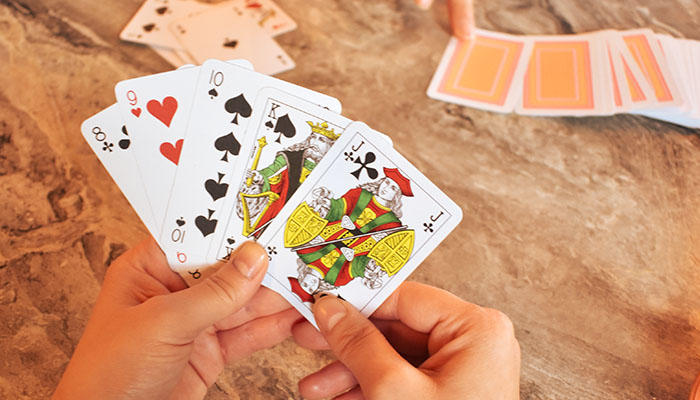Free Classifieds at Hot-Web-Ads.com - View Item Content by ID 14708443
Hot-Web-Ads > Personals > Other Personals Ads > Item ID 14708443
Item ID 14708443 in Category: Personals - Other Personals Ads
Cannot view this item. It could be pending, expired or deleted.
Below item is randomly selected from the same category and may have similar content.
How to Play BS: Step-by-Step Rules for Beginner and Expert | |
Free Online Advertising Free Internet Web Site Advertising. UK Free Classifieds United Kingdom Free Ads Website. 100% Free Ad Posting. Canada Free Ads Popular Online Classifieds in Canada. No Sign up, No Email Required to Post. BS (also known as “Cheat,” “I Doubt It,” or “Bluff”) is a fast-paced card game in which deception and observation are just as important as the cards you hold. The objective is simple: be the first to discard all your cards. However, mastering BS requires understanding both fundamental rules and advanced tactics. This guide breaks down the game into clear, step-by-step instructions for beginners and adds expert-level strategies to elevate your play. 1. Game Setup Players: 3–6 Deck: Standard 52-card deck; remove jokers (unless you want wild-card variations). Deal: Shuffle and deal all cards one at a time. Some players may have one extra card—that’s fine. Seating & Turn Order: Arrange seats so play proceeds clockwise. The dealer typically starts, then play moves to their left. 2. Core Rules Rank Sequence: Cards are played in ascending order: Ace → 2 → 3 → … → King → back to Ace. Playing Cards: On your turn, place one or more cards face-down onto the central pile and announce the rank you claim (truthful or not). Challenging (“BS!” Call): Any player may challenge the last play before the next turn begins by shouting “BS!” If the challenged player lied: they pick up the entire discard pile into their hand. If they told the truth: the challenger picks up the pile instead. Winning: The first player to successfully discard all cards wins immediately. 3. Step-by-Step Guide for Beginners 3.1 Learning the Flow First Turn: Dealer begins by placing cards (e.g., “one Ace”) face-down and announcing them. Subsequent Turns: Each player must announce the next rank (“two 2s,” then “three 3s,” etc.). Truth or Bluff: If you have the announced rank, you may play it honestly; otherwise, bluff with other cards. Challenge Window: After any play, listen for “BS!” challenges before the next player moves. 3.2 Simple Tips Start Conservatively: In your first few hands, play honest cards to get comfortable and build a trustworthy image. Small Bluffs: Bluff with only one or two cards so that picking up a small pile isn’t too punishing if caught. Watch Reactions: Notice body language—hesitation or overconfidence can signal a bluff. 4. Intermediate Tactics 4.1 Card Counting Basics Track Declarations: Keep mental notes of how many of each rank have been claimed. If four 5s are already out, a fifth 5 is impossible. 4.2 Positional Awareness Early Position: Tighten up—avoid big bluffs when many players still need to act. Late Position: You can be more aggressive; you see how many players passed or folded before you. 5. Expert-Level Strategies 5.1 Credibility Management Truth Bank: Build a reserve of truthful plays early. That “credibility bank” allows riskier bluffs later. Selective Honesty: Occasionally tell the truth in borderline situations (e.g., claiming a rank when unlikely). This reverse-psychology move makes opponents hesitate. 5.2 Sophisticated Bluffing Timed Bluffs: Bluff when the discard pile is small to minimize penalty if challenged, or when opponents seem cautious. Mixed Quantities: Vary the number of cards you play—single cards, doubles, triples—to avoid pattern recognition. 5.3 Psychological Play Controlled Breathing & Pace: A steady pace masks nervousness. Conversely, a deliberate pause before a bluff can misdirect. Table Image Exploitation: If you’ve been caught bluffing recently, opponents may over-challenge—use that to truthfully dump unwanted cards. 6. Common Pitfalls to Avoid Over-Bluffing: Too frequent lying destroys credibility and invites constant challenges. Impulse Challenges: Calling BS out of frustration can backfire spectacularly if you’re wrong. Ignoring Table Dynamics: Each group plays differently—adjust your style to the tendencies at your table. 7. Variations to Keep It Fresh Joker Wild: Add jokers as wildcards; they can represent any rank, increasing bluff complexity. Partnered BS: Pair up in teams of two—teammates can pass subtle signals or cover one another’s bluffs. Reverse Order: Mid-game, switch rank order direction (King back down to Ace) for an extra twist. Conclusion BS is a deceptively simple game that rewards both strategic thinking and psychological insight. Beginners should focus on mastering the basic flow—playing honestly, small bluffs, and recognizing obvious lies—while intermediate players can begin counting cards and leveraging position. Experts, in turn, refine credibility management and psychological tactics to keep opponents guessing. Whether you’re just learning or looking to dominate your next game night, these step-by-step rules and strategies will help you play BS like a true pro. Good luck, and may your bluffs go unchallenged!  | |
| Target State: All States Target City : All Cities Last Update : May 12, 2025 5:11 AM Number of Views: 8 | Item Owner : Chriselle Contact Email: (None) Contact Phone: (None) |
| Friendly reminder: Click here to read some tips. | |
Hot-Web-Ads > Personals > Other Personals Ads > Item ID 14708443
© 2025 Hot-Web-Ads.com
USNetAds.com | GetJob.us | CANetAds.com | UKAdsList.com | AUNetAds.com | INNetAds.com | CNNetAds.com | USAOnlineClassifieds.com
2025-05-13 (0.334 sec)